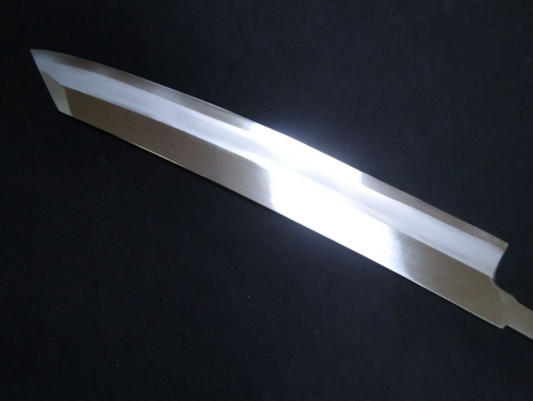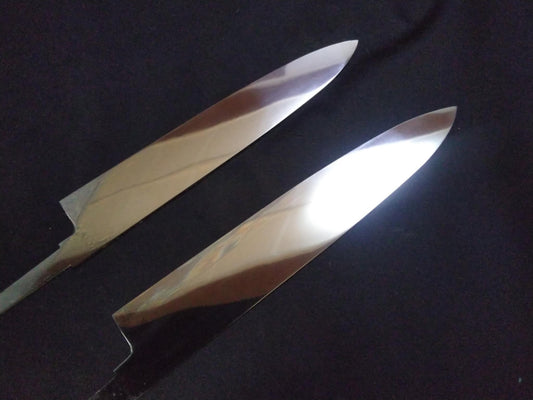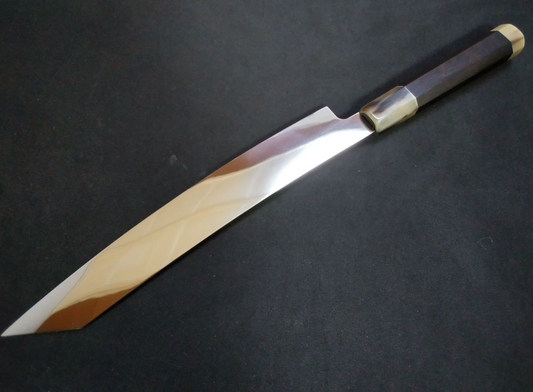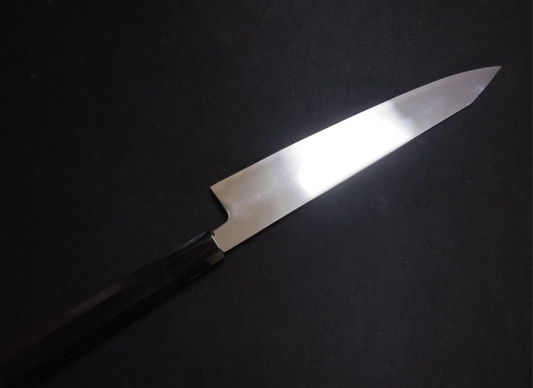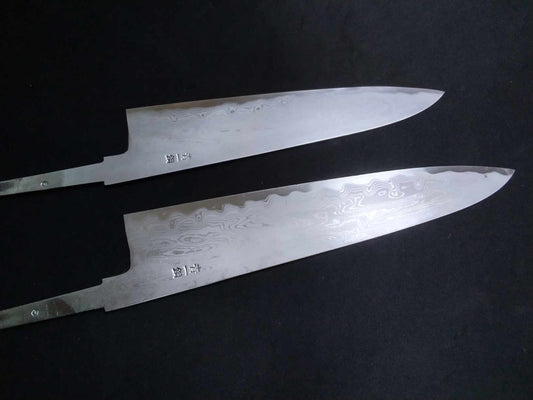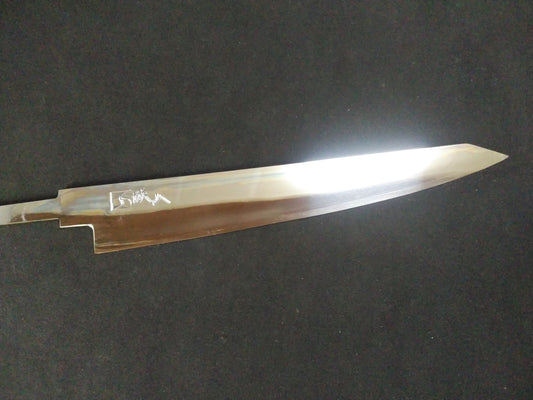
Gyuto
-
Originally used for meat, this double-edged blade evolved into the all-purpose knife trusted by chefs around the world.
Sharp, balanced, and full of history — the Gyuto is where tradition meets versatility. -
Gyuto Collection
-

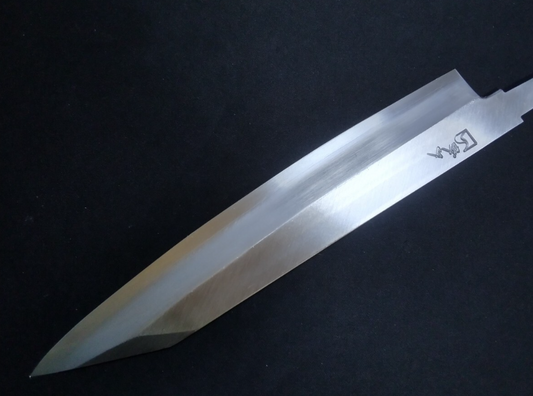 Sold out
Sold outGinsan Gyuto 240mm -Kido Finishing
Regular price $410.00 CADRegular priceUnit price / per$0.00 CADSale price $410.00 CADSold out -
Blue Steel #2 Gyuto 270mm-Kido Finishing
Regular price $420.00 CADRegular priceUnit price / per$0.00 CADSale price $420.00 CADSold out -
Ginsan Gyuto 210mm -Mirror Polished(both sides)
Regular price $430.00 CADRegular priceUnit price / per$0.00 CADSale price $430.00 CADSold out -
Ginsan Gyuto (Kiritsuke) 240mm -Kido Finishing
Regular price $460.00 CADRegular priceUnit price / per$0.00 CADSale price $460.00 CAD -
Super Steel (Honyaki) Gyuto 210mm-Mirror Polished(both sides)
Regular price $570.00 CADRegular priceUnit price / per$0.00 CADSale price $570.00 CADSold out -
Super Steel (Honyaki) Japanese-style Gyuto 240mm-Mirror Polished(both sides)
Regular price $570.00 CADRegular priceUnit price / per$0.00 CADSale price $570.00 CAD -
ZDP189 Gyuto (Kiritsuke) 240mm
Regular price $570.00 CADRegular priceUnit price / per$0.00 CADSale price $570.00 CAD -
Blue Steel #1 Damascus Gyuto 210mm- Mirror Polished Blur Finish
Regular price $584.00 CADRegular priceUnit price / per -
Super Steel (Honyaki) Gyuto 240mm-Mirror Polished(both sides)
Regular price $590.00 CADRegular priceUnit price / per$0.00 CADSale price $590.00 CADSold out -
ZDP189 Gyuto (Kiritsuke) 270mm
Regular price $610.00 CADRegular priceUnit price / per$0.00 CADSale price $610.00 CAD -
Ginsan (Honyaki) Gyuto 210mm -Mirror Polished(both sides)
Regular price $615.00 CADRegular priceUnit price / per$0.00 CADSale price $615.00 CADSold out -
Blue Steel #1 Damascus Gyuto 240mm- Mirror Polished Blur Finish
Regular price From $631.00 CADRegular priceUnit price / per -
Ginsan (Honyaki) Gyuto 240mm -Mirror Polished(both sides)
Regular price $655.00 CADRegular priceUnit price / per$655.00 CADSale price $655.00 CADSold out -
ZDP189 Gyuto 240mm-Mirror Polished(both sides)
Regular price $669.00 CADRegular priceUnit price / per$0.00 CADSale price $669.00 CAD -
Ginsan (Honyaki) Gyuto 270mm -Mirror Polished(both sides)
Regular price $685.00 CADRegular priceUnit price / per$685.00 CADSale price $685.00 CADSold out -
ZDP189 Gyuto (Kiritsuke) 270mm -Mirror Polished(both sides)
Regular price $750.00 CADRegular priceUnit price / per$0.00 CADSale price $750.00 CAD
KIREAJI's Three Promises to You
-

1. Forged in the Legacy of Sakai
In the hands of master artisans, each blade is born from over six centuries of Japanese knife-making heritage. Perfectly balanced, enduringly sharp, and exquisitely crafted—every cut carries the soul of true craftsmanship.
-

2. Thoughtful Care for Everyday Use
Each knife comes with a hand-fitted wooden saya for safe storage. Upon request, we provide a complimentary Honbazuke—the traditional final sharpening—so you can enjoy effortless performance from day one.
-

3. A Partnership for a Lifetime
A KIREAJI knife is more than a tool—it is a lifelong companion. Through our bespoke paid aftercare services, we preserve its edge and grace, so it remains as precise and dependable as the day it first met your hand.
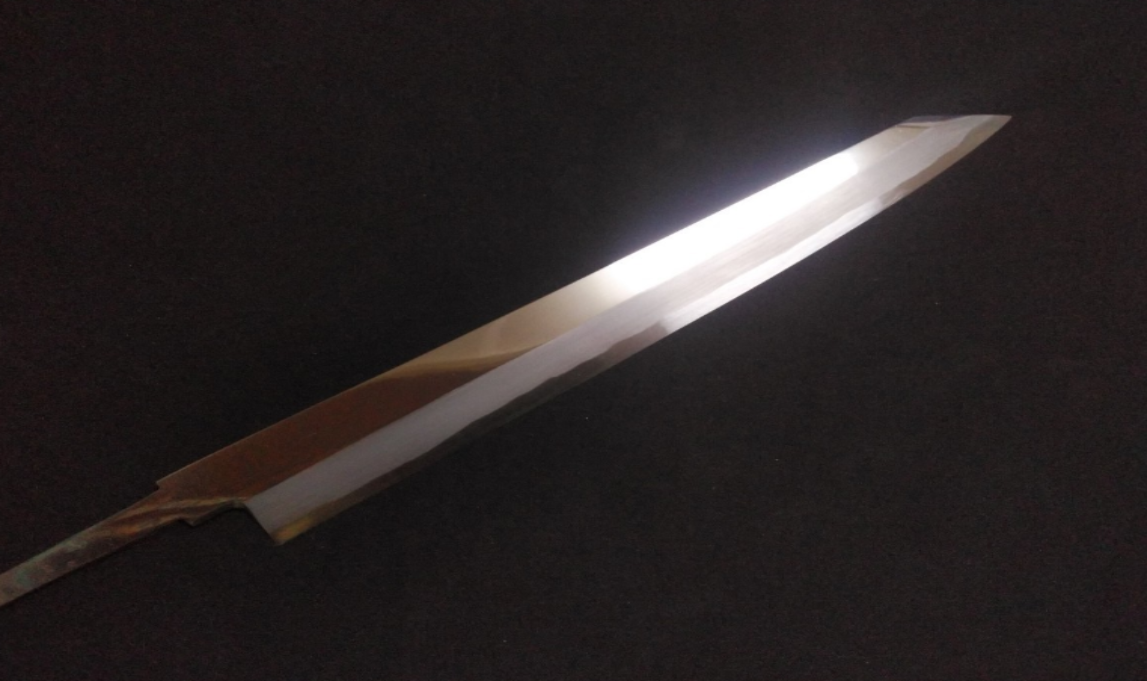
Why Many Product Photos Show Only the Blade
At KIREAJI, every knife is Made to Order.
That means your knife is completed — handle attached and final adjustments made — only after you place your order, by skilled artisans in Sakai, Japan.

Global Delivery from Sakai
Across the world, discerning customers seekgenuine Japanese knives crafted in Sakai.
At KIREAJI, we work alongside the master artisans of Sakai to fulfill that desire — shipping authentic Japanese knives straight from Sakai to kitchens around the globe.
Gyuto
-
What Is a Gyuto?
— The Japanese Evolution of the Chef's Knife
-
The Gyuto is the Japanese version of the Western chef’s knife, a versatile tool that has been adapted and refined through the lens of Japanese craftsmanship. Originally introduced from France and Germany during Japan’s modernization in the Meiji era, the chef’s knife found new life in Japanese kitchens.
The name "Gyuto" (literally, 'beef sword') reflects its original purpose—to cut meat. While its shape remains similar to its Western counterpart—with a long, pointed blade designed for slicing meat, fish, and vegetables—it has evolved into something uniquely Japanese.
Today, the Gyuto stands as a symbol of the harmony between utility and precision, offering the performance of a Western chef’s knife with the finesse of Japanese craftsmanship.
-

Features and Uses of the Gyuto
— A Western Foundation Refined by Japanese Technique
While the Gyuto’s roots lie in Western culinary tradition, it has taken on new dimensions thanks to Japan’s dedication to fine craftsmanship.
One key feature is the thin, lightweight blade, which allows for highly controlled, fluid movement—ideal for chefs who value precision over brute force. Unlike heavier Western knives that rely on weight, a Gyuto responds intimately to the movements of your hand.
Common Uses:
- Slicing meat and trimming fat or sinew
- Chopping vegetables with speed and precision
- Filleting fish or preparing sashimi in delicate slices
In short, it is a true all-purpose knife that fits seamlessly into both professional kitchens and home settings.
-
The Appeal of the Gyuto
— A Tool That Grows With Its User
The true charm of a Gyuto lies in how it blends practicality with artistry. Many Gyuto knives are crafted individually by skilled artisans, each one a product of careful steel selection, expert heat treatment, and ergonomic design.
As a result, the Gyuto often feels less like a tool and more like an extension of your hand.
With proper care—sharpening, oiling, and regular maintenance—your Gyuto becomes a lifelong companion, growing more attuned to your needs the longer you use it.In Japanese kitchen culture, a knife is not something to use and toss—it’s a tool to nurture. The Gyuto embodies this philosophy: a knife that sharpens not only your ingredients but your technique and intuition as well.
-

Conclusion
The Gyuto is more than a Japanese chef’s knife—it’s a cultural bridge between Western utility and Japanese sensitivity.
Whether you're slicing beef, chiffonading herbs, or making sashimi, the Gyuto adapts to your hand, your style, and your vision. For anyone seeking a truly versatile, precise, and beautifully made kitchen knife, the Gyuto is a choice that won’t disappoint.
It is, simply put, a knife that elevates your craft.
-
Now that we've explored the features and versatility of the Gyuto, it's time to introduce our carefully curated Gyuto Knife Collection.
Each knife in this collection represents a seamless fusion of Japanese craftsmanship and modern culinary needs.
The Gyuto is truly an all-round performer, ideal for everything from home cooking to professional kitchens.
With its perfect balance of maneuverability and cutting power, the Gyuto is a reliable partner you can count on, no matter the ingredient.You’re sure to find a knife that perfectly complements your cooking style.
A Longer Blade on Gyuto Knives is Highly Recommended
-
When it comes to Gyuto knives, professional chefs often choose longer blades, and for good reason. In professional kitchens, chefs frequently work with larger ingredients, and a longer blade allows them to cut through these more efficiently by covering more surface area in a single stroke.
-
One key advantage of a longer blade is how it helps maintain sharpness over time. During sliding cuts, the part of the blade that contacts the cutting board gradually dulls. With a longer knife, however, chefs can simply shift the contact point on the blade, allowing the edge to stay sharper longer and preventing excessive wear on any single section. This means your Gyuto will keep performing smoothly for longer periods.
-
Additionally, a longer blade offers greater flexibility in choosing the exact spot on the blade to cut with. Even if one part becomes slightly dull, you can adjust and use a different section tailored to the ingredient and the task at hand. This adaptability leads to better control and precision during cutting.
-
Moreover, making larger, quicker sliding cuts with a longer blade often results in cleaner, more efficient slicing. The smooth coordination between the knife and the cutting board enhances overall cutting performance.
-

-
For these reasons, it's no surprise that many professional chefs prefer longer Gyuto knives. Even if you are buying your first Gyuto, opting for a longer blade will elevate your cutting experience and offer greater versatility in your kitchen.
When choosing between a Santoku and a Gyuto knife
-
Choosing between a Santoku and a Gyuto knife means understanding their distinct characteristics and the cutting techniques they excel at. Both knives are celebrated for their versatility, but they shine in different areas of food preparation. Knowing these differences will help you find the knife that best matches your cooking style and needs.
-

-
Main Features
Santoku:
- Blade Length: Typically around 165mm or 180mm, with some models as short as 150mm or slightly longer.
- Blade Shape: Features a slightly rounded tip and a relatively straight edge, designed for efficient chopping and slicing with controlled movements.
-
Gyuto:
- Blade Length: Available in various sizes, commonly ranging from 180mm up to 300mm.
- Blade Shape: Has a smooth, gradual curve from heel to tip, ideal for both push-cutting and pull-cutting techniques.
-
Advantages
Santoku:
- Versatility: A true all-purpose knife, perfect for cutting meat, fish, and vegetables.
- Ease of Use: The shorter, straighter blade offers excellent control, especially for push-cutting, making it a reliable tool for everyday cooking.
-
Gyuto:
- Cutting Efficiency: Excels in push-cutting, where the blade moves forward and down, allowing for smooth, powerful cuts with minimal effort.
- Dual Technique: Also shines in pull-cutting, where the blade is drawn backward, perfect for delicate slicing like sashimi or soft fish and meat.
- Comfort: The longer blade enables smoother, faster cuts, reducing fatigue during extended use—ideal for professional kitchens or large-scale cooking.
-
Considerations
Santoku:
- Push-Cutting Limitations: Its shorter blade is less suited for extensive push-cutting compared to the Gyuto.
- Precision: While versatile, it is less optimized for tasks that require precise push-cutting techniques.
-
Gyuto:
- Specialized Use: Though excellent for general use and push-cutting, the longer blade may be less maneuverable for highly delicate tasks where a shorter blade like the Santoku’s has an advantage.
- Blade Care: The longer blade can be more vulnerable to damage when cutting very hard materials such as frozen foods or bones.
-

-
Summary
The primary difference between the Santoku and Gyuto lies in their blade length and cutting technique suitability. The Santoku’s compact and versatile design suits everyday cooking, especially for chopping and slicing with push-cutting. The Gyuto’s longer, curved blade excels at both push-cutting and pull-cutting, making it ideal for tasks requiring smooth, efficient, and varied cutting motions.
FAQ About Gyuto

01. What is a Gyuto knife used for?
The Gyuto (牛刀) is a versatile Japanese chef’s knife designed for a wide range of tasks. It excels in both Japanese and Western-style cooking, and is commonly used for:
ー Meat preparation: Trimming fat, slicing steaks, or carving roasts
ー Vegetable preparation: Chopping, slicing, and julienning
ー Fish handling: Cutting fillets and removing skin (for boneless tasks)
ー General kitchen work: From herbs to sandwiches, a Gyuto can do it all
Its adaptability makes it a popular choice for both home cooks and professional chefs.
02. What are the key advantages of a Gyuto?
The Gyuto is engineered for precision and efficiency, offering several practical benefits:
ー Thin blade: Cuts with less resistance and helps reduce ingredient sticking
ー Sharpness: The fine edge allows clean slicing without crushing the food
ー Pointed tip: Excellent for detailed cuts, trimming, and scoring ingredients
ー Smooth motion: Ideal for long drawing cuts, making it suitable for tasks like slicing roast beef or sashimi blocks
These qualities combine to deliver excellent control and cutting performance.
03. Why do chefs prefer Gyuto knives?
Chefs value the Gyuto for its balance of power, precision, and versatility:
ー Narrow blade width reduces drag and improves slicing performance
ー Long blade length allows clean strokes without repeated sawing motions
ー Ideal for both push-cutting and pull-cutting techniques
ー Stylish design makes it a favorite for open kitchens and chef’s counters
Whether for high-volume prep or elegant plating, the Gyuto adapts to many cooking styles.
04. Why is it called a “Gyuto”?
“Gyuto” literally means “beef sword” in Japanese.
The knife is inspired by Western chef’s knives that were originally designed for cutting beef and other meats. As Western food culture spread in Japan, this knife became known as “Gyuto” to reflect its origin and function.
05. Are there any disadvantages to using a Gyuto?
While the Gyuto is extremely capable, it does have a few limitations:
ー Sharp pointed tip: Can be more dangerous than a Santoku if not handled carefully
ー Not ideal for cutting through bones or frozen foods
ー Long blade may feel unwieldy in small kitchens or for beginners
ー Some models are heavier, which may cause fatigue over extended use
With proper handling and awareness, these issues are easily manageable for most users.
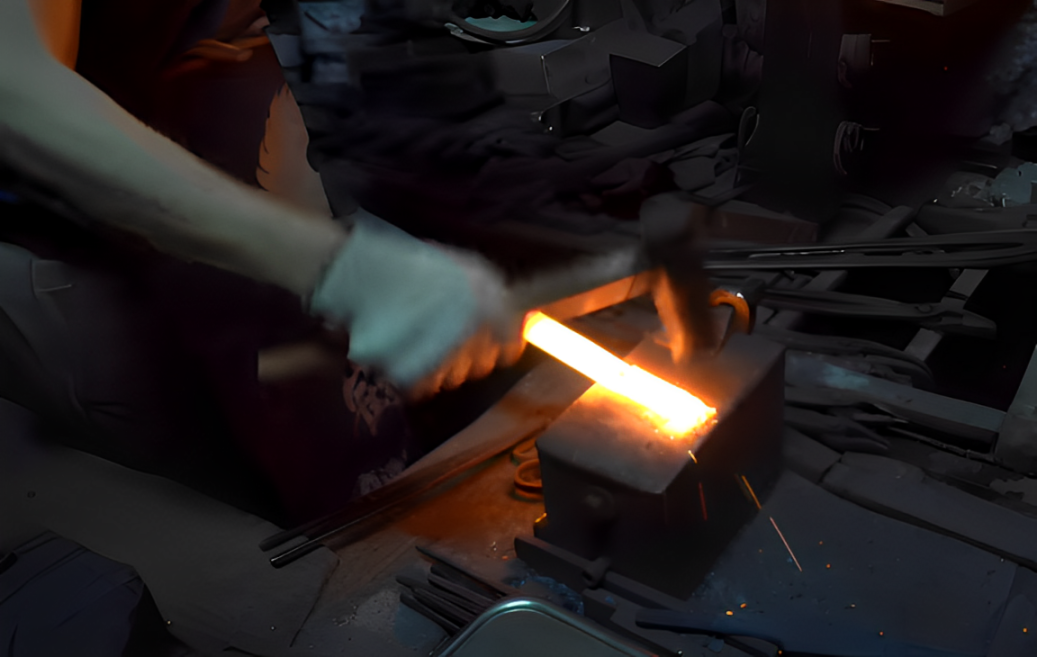
The Origin of Craftsmanship
-
The Charm of the Gyuto—A Tool for Mastering the Art of Cooking
The Gyuto, with its beautiful curve and sharp blade, deepens the joy of cooking. It is a versatile knife that effortlessly slices through meat, vegetables, and fish, making it a favorite among professional chefs. Especially, its cutting performance stands apart from other knives, allowing for precise and meticulous cuts.
-
The natural curve of the Gyuto, from the base to the tip, ensures minimal contact with the cutting board, allowing for a smooth, gliding motion when slicing. This feature lets you cut ingredients cleanly and beautifully, while maintaining maximum efficiency.
-
For those with a deep passion for cooking, using a Gyuto will help elevate your skills. The sense of unity between the handle and the blade gives you a seamless experience, broadening your culinary world—this is the true charm of choosing a Gyuto.
How Japanese Knives Are Made: The Sakai Tradition
VIDEO PROVIDED: JAPAN TRADITIONAL CRAFTS AOYAMA SQUARE (YOUTUBE)
-
Sakai Forged Blades — A Tradition Honed to Perfection
Loved by chefs around the world and trusted by 98% of professionals in Japan, Sakai knives are renowned for their unparalleled sharpness and craftsmanship.
-
At KIREAJI, we partner directly with the Shiroyama Knife Workshop in Sakai, Japan — and ship each blade straight from the workshop to kitchens across the globe.
No middlemen. No mass production. Just genuine, master-crafted knives, delivered with pride and precision.




